Four-door feud: BMW 5 Series vs Mercedes E-Class
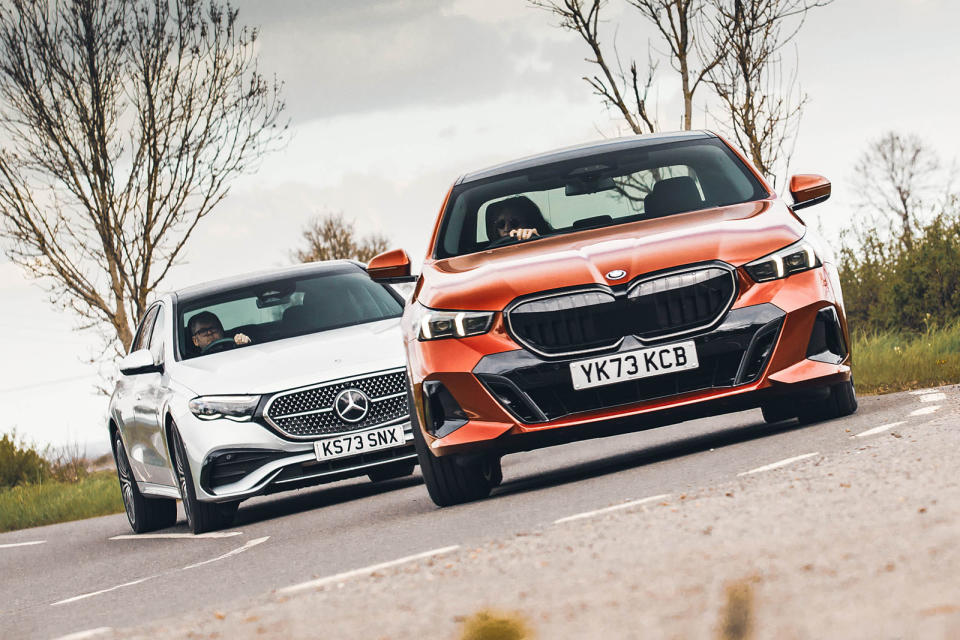
Both the 5 Series and E-Class have been key players in themselves and Autocar's history
This match-up feels like a bit of a barometer for the car industry.
We’ve done BMW 5 Series versus Mercedes-Benz E-Class many times before – the first instance I can find in the Autocar archive is from 1976, when they were there as supporting characters in a Rover SD1 test.
Various trends, types of cars and entire car makers have come and gone, but this pairing has felt like such a constant. It charts not only how cars have inflated in size but also the rate of inflation – like a classier version of the Big Mac Index (both are about 10 times more expensive than they were in ’76).
More than anything, it reflects the preferred powertrain of the day. Our original contenders came with straight-six petrol engines, moving to the big diesels in the 2000s that were the default choice for so long.
Today, the BMW offers no diesels, having reduced its purely combustion-engined choice in the UK to just a cooking 2.0-litre petrol. Never mind the classic recipe of a straight-six petrol, a manual gearbox and rear-wheel drive – that feels like a distant dream.
Bemoan that all you like, but do you enjoy paying tax? Probably not, and neither do drivers of executive saloons. These are overwhelmingly company cars, so people in effect ‘choose’ the one into which they are shepherded via the prevailing tax regime. And these days that means either an electric car or a plug-in hybrid.
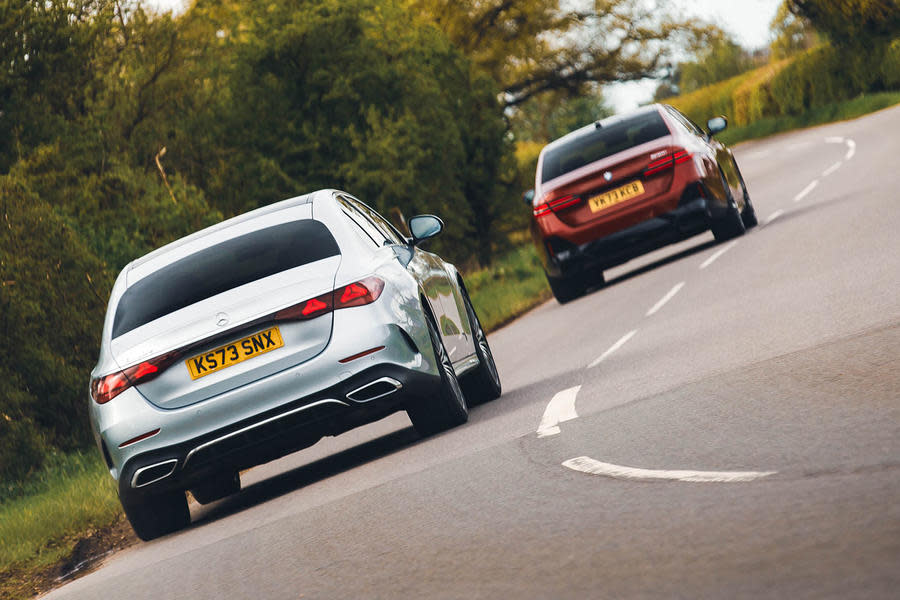
Introducing the BMW 5 Series and Mercedes E-Class
Quick links: Powertrains - Economy - Driving dynamics - Ride and handling - Interior - Verdict - Specifications
What we have here, then, is the BMW 530e and the Mercedes E300e.
They are unrecognisable from their 1970s forebears, but they still follow very similar formulas: a turbocharged 2.0-litre four-pot up front drives the rear wheels through a torque-converter automatic that hides an electric motor of about 150bhp. There’s a 20kWh (or thereabouts) battery hidden under the floor of the BMW and under the boot of the Mercedes for an electric range of more than 60 miles.
On paper there’s not much to separate them, but that means little: we’ve had a number of promising cars drop through the thin ice of real-world usability and drivability lately.
BMW 5 Series vs Mercedes E-Class: Powertrains
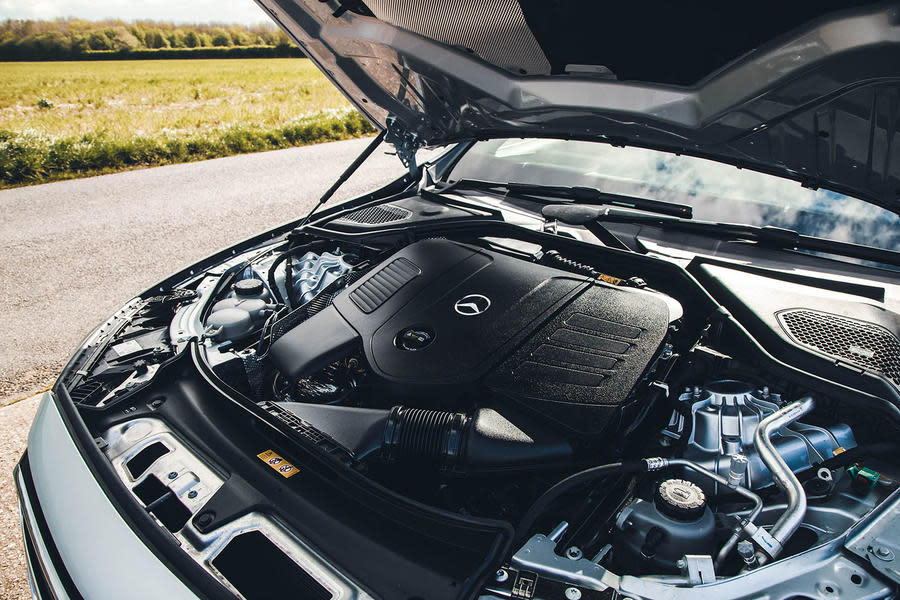
First blood goes to the Mercedes, because its larger battery (19.5kWh plays 18.7kWh) lets it convince the authorities that it can go farther on a charge and is therefore worthy of a lower tax burden. In reality, however, it proved less efficient on electric power than the BMW, and both cars’ batteries clocked out after 60 miles.
That’s still a figure that beats early electric cars and could be enough for owners to do nearly all of their daily mileage using only electricity.
It does seem like BMW has its electric ducks in a slightly neater row, because in its EV mode the 530e is not only more efficient but also more intelligent than the E300e.
When you set off on a 200-mile drive with a full battery, the BMW will strategically use the electric power so it depletes the battery by the end, but it retains some electric power for traffic queues and town driving. The Mercedes is claimed to do the same, but in practice just uses up its charge at the start.
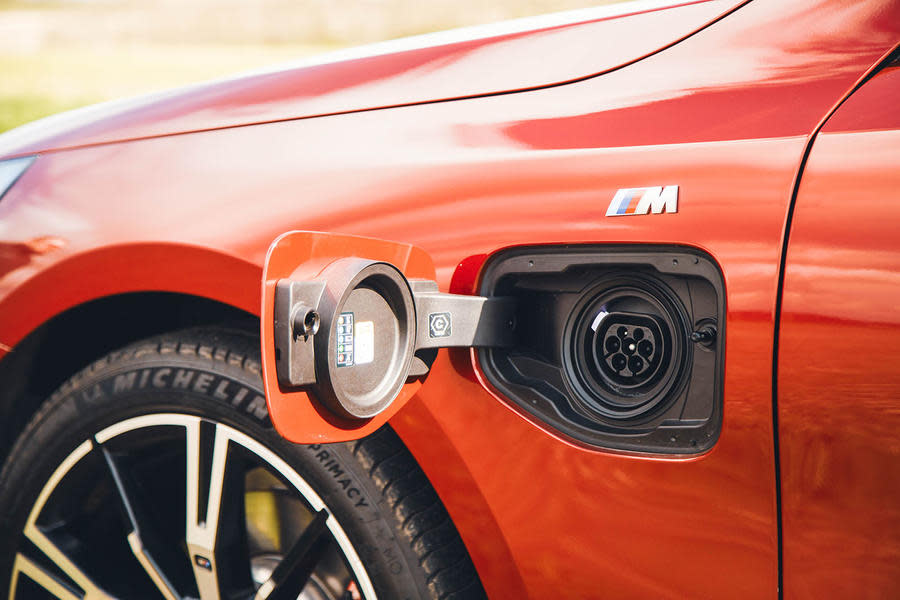
BMW 5 Series vs Mercedes E-Class: Economy
While we’re on the hot topic of PHEV running costs, let’s get this out of the way first: you’re vanishingly unlikely to achieve the quoted WLTP fuel economy figures, but an overall mile-per-gallon figure for a PHEV is meaningless anyway, because it’s so dependent on how much of your driving you can do on electricity.
What you need to know is the economy figure when they’re running on electric (3.0mpkWh for the Mercedes, 3.3mpkWh for the BMW), and that both of them can still manage around 40mpg when their batteries run out. If you know roughly how much you will use each power source, you can work out how much they will cost you to run.
You don’t have to be an accountant to drive a plug-in hybrid, but it certainly helps.
BMW 5 Series vs Mercedes E-Class: Driving dynamics
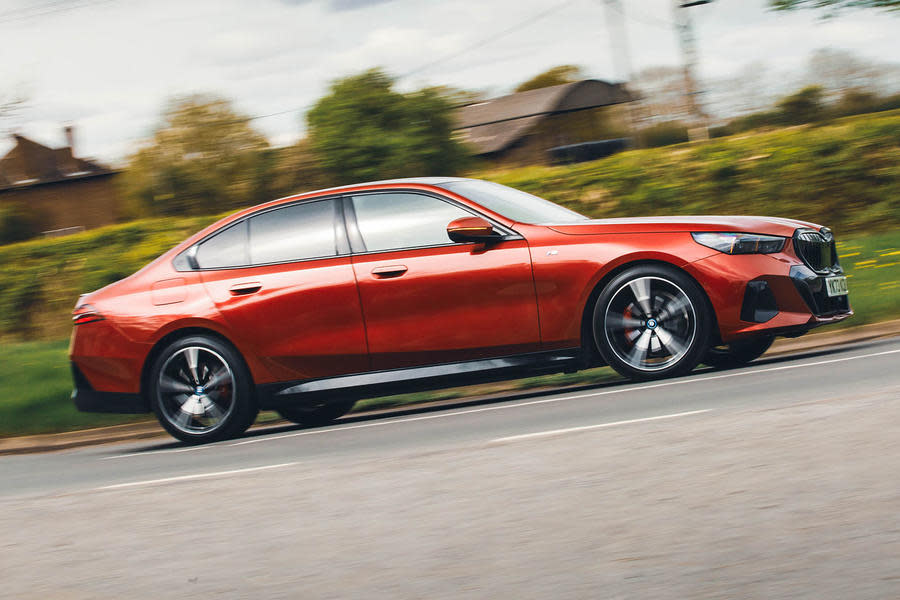
With the numbers covered, let’s turn to the question of whether there’s still some joy to be found in these 300bhp rear-wheel-drive saloon cars. And the short answer is yes, there is.
There’s something fundamentally right about sinking down into the mildly sporty seat of a rear-wheel-drive executive saloon, one in which you’re not sitting raised up on a couple of inches of battery pack.
The BMW’s seat goes down lower still than the Mercedes’, but both offer a purposeful legs-outstretched driving position, with a satisfying view over a long bonnet.
They’re both purely rear-drive, too, and they make good use of that. They’re nicely balanced, tightening their cornering lines on the throttle and letting you get into a flow on a twisty road with naturally weighted steering systems that have a build-up of weight as grip levels change.
Exciting? Despite their 300bhp and respective M Sport/AMG branding, they are too heavy and, particularly in the case of the BMW, too big. The current 5 Series is longer and wider than an E65-generation 7 Series from 20 years ago, and threading it along a sinuous B-road feels somewhat precarious.
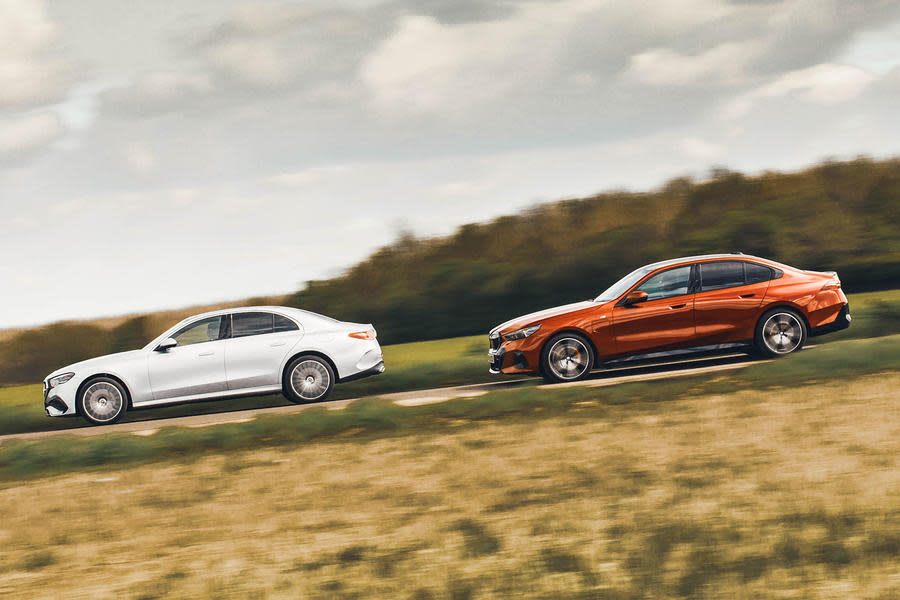
As long as you stay away from the narrowest country lanes, however, both are absolutely enjoyable to drive, with the BMW edging it thanks to slightly tighter body control.
These plug-in hybrids also make pretty good use of their electric power sources. Many PHEVs don’t feel like they’re making all the power they’re supposed to unless you’ve got your foot to the floor, but these cars can deploy their electric motors early and often.
It gives the effect of strong thrust without sending the petrol engine screaming to the redline – after all, neither of these 2.0-litre four-cylinders are a patch on the straight sixes of old. Through a combination of acoustic engineering and some subtle augmentation through the speakers, they both sound smooth and willing, however.
BMW 5 Series vs Mercedes E-Class: Ride and handling
When it comes to ride quality, both the BMW and the Merc are crying out for adaptive suspension, or simply more compliant passive options, although it applies to the 530e more than the E300e.
The adaptively suspended 550e rides fluidly, but the 530e, well damped though it may be, fidgets continually on its passive M Sport suspension, and on the motorway that gets rather tiresome.
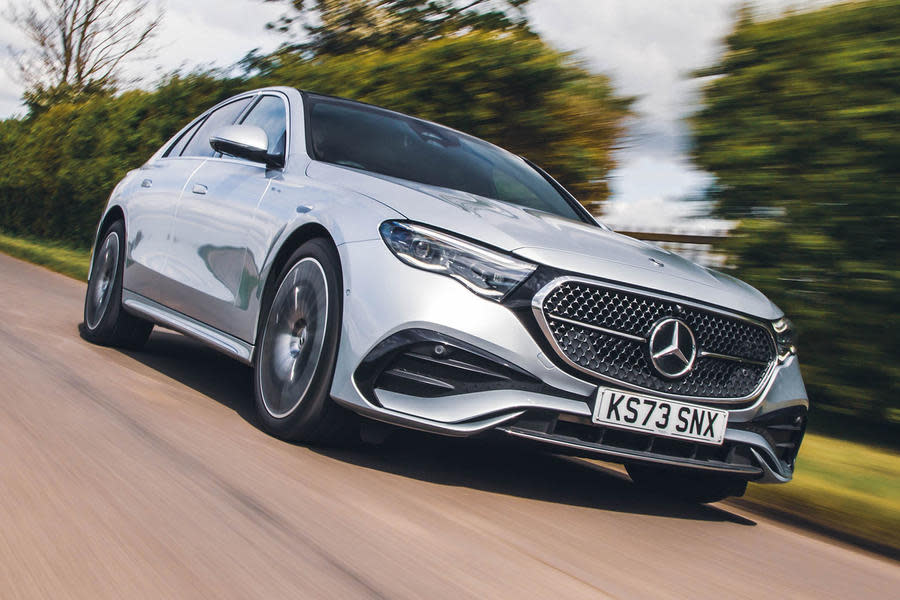
The E-Class feels more ordinary: also a touch over-firm and a bit ragged over bad asphalt but calmer at higher speeds over long distances.
Anyway, the differences between the BMW’s and Mercedes’ chassis are ultimately a question of nuance rather than absolute superiority; where they start to diverge is inside.
BMW 5 Series vs Mercedes E-Class: Interior
These cars have always been tech showcases, and while in 1990 that meant a digital fuel consumption readout and electric seats, in 2024 it means touchscreens – but with two distinct approaches.
The BMW maintains the iDrive concept with a rotary controller and some shortcut buttons, which sounds like it should be easier to use on the move than Mercedes’ wall-to-wall touchscreen.
However, while a certain action might take just two taps in the Mercedes, it often takes many more actions in the BMW because of its convoluted and overloaded menu structures. Want to reset the trip computer? Good luck.
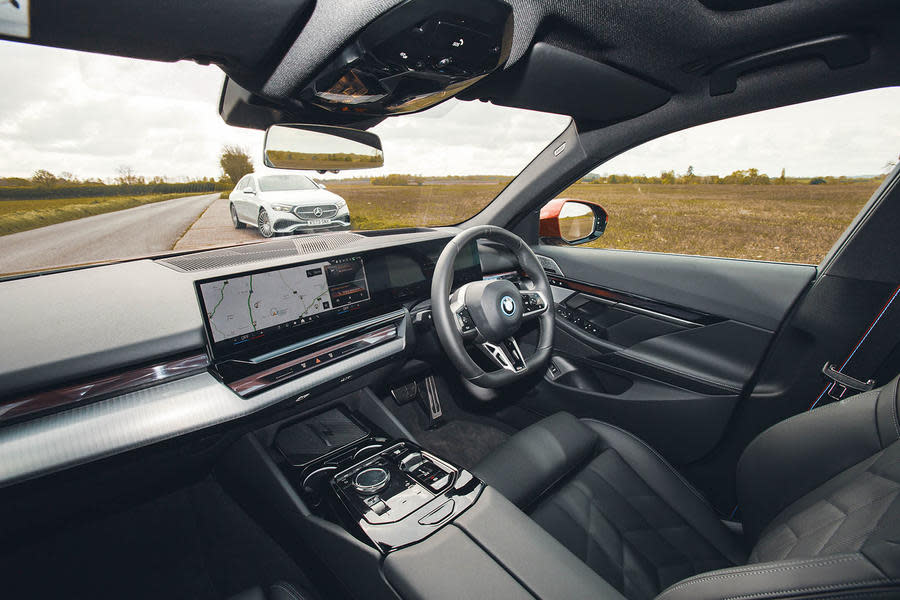
BMW has also stripped all the tactility from the physical controls it still has, so you need to look down to operate them – and that is much more distracting than pressing a screen right in front of you.
Mercedes’ control layout is by no means perfect, but I shouted at it a lot less than I did at the BMW’s, and on the whole, not eliciting rage is quite a desirable quality in a luxury car.
The E-Class further pulls ahead with the quality of its interior materials. Where it seems to largely halt the slipping standards in Mercedes cabins, the 5 Series seems to kick it off at BMW.
That the decorative speaker grilles are laser-cut metal in the Mercedes and plastic in the BMW is the most obvious, but the 5 Series’ very plain window switches, swathes of gloss black and clear plastic and the unsubstantial and plasticky gear selector show BMW is on a hardcore cost-cutting drive. While the E-Class is guilty of some of these sins, it grates more in the BMW.
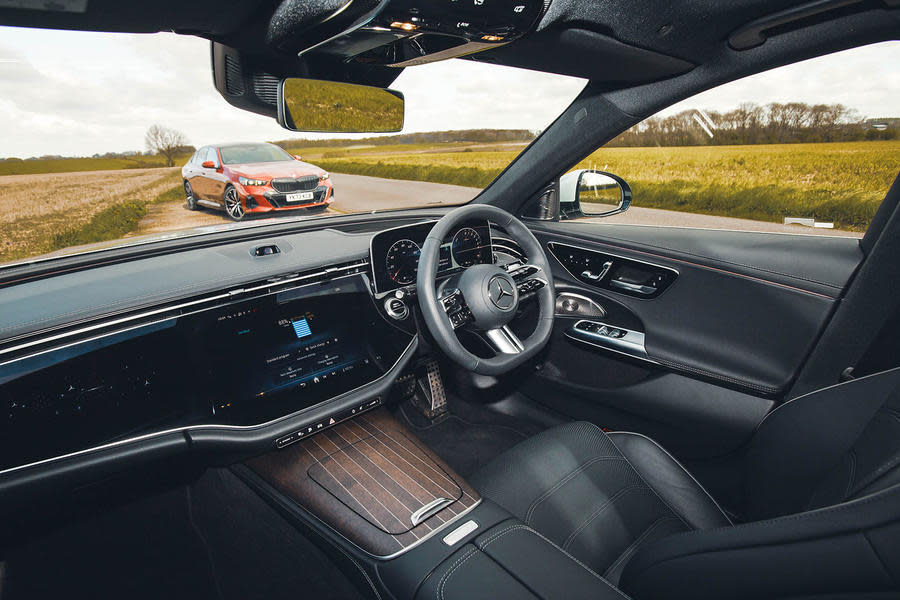
The Mercedes’ interior ambience feels slightly more cohesive, then, but it’s just as bad as the BMW for interior space. Both these cars take up a lot of space on the road, but from the inside you might wonder where it’s all gone.
For a car that is almost synonymous with taxis, rear leg room in the E-Class is unspectacular, and it’s even worse in the BMW. It’s baffling that a six-footer can’t sit behind another one in this five-metre-long car without their knees touching the back of the front seat ahead of them.
At least the 530e’s boot is unaffected for being a plug-in hybrid. That can’t be said for the E300e, which loses a whopping 170 litres compared with the diesel. You’ll know whether boot space or rear leg room matters more for you, but on overall usage of space they’re both losers.
BMW 5 Series vs Mercedes E-Class: Verdict

If plug-in hybrids have come of age with regards to their powertrains, then they are still compromised in their packaging and the way they handle their considerable kerb weight.
Ultimately, then, both of these cars are compromised: the Mercedes because it uses a platform that’s chiefly intended for petrol and diesel cars, and the BMW because it uses a platform that also needs to accommodate a pure EV in the form of the i5.
It’s very likely both of these cars would be even more agreeable with a 3.0-litre diesel engine, while still returning 50mpg without having to plug it in. But that point is moot, because the authorities have deemed it so.
Would they be better as EVs? In the case of the BMW i5 and Mercedes EQE, not really, but that’s more down to the inadequacies of those particular cars – and the upcoming Audi A6 E-tron could well shake things up.
Away from hypotheticals, these two are a logical choice: good performance and comfort, with (mostly) classy interiors, and low running costs – as long as you plug them in. Which one to choose?
The classic verdict of ‘Mercedes comfy, BMW sporty’ doesn’t apply here, because they’re level-pegging in that area. In the end, the Mercedes’ lower tax will make it slightly cheaper to run, but more importantly it feels like the more cohesive, grown-up car, one that uses its in-cabin tech to make your journey easier whether by navigation or entertainment, but without imposing itself too much.
Winner
1st. Mercedes E-Class
A rounded plug-in hybrid with a good balance of ride, handling performance and range. Better tech and lower tax get our vote.
2nd. BMW 5 Series
An unusually accomplished hybrid system and plays the sports saloon surprisingly well, but the ride is overly firm and the tech gets on your nerves.
BMW 5 Series vs Mercedes E-Class: Specifications
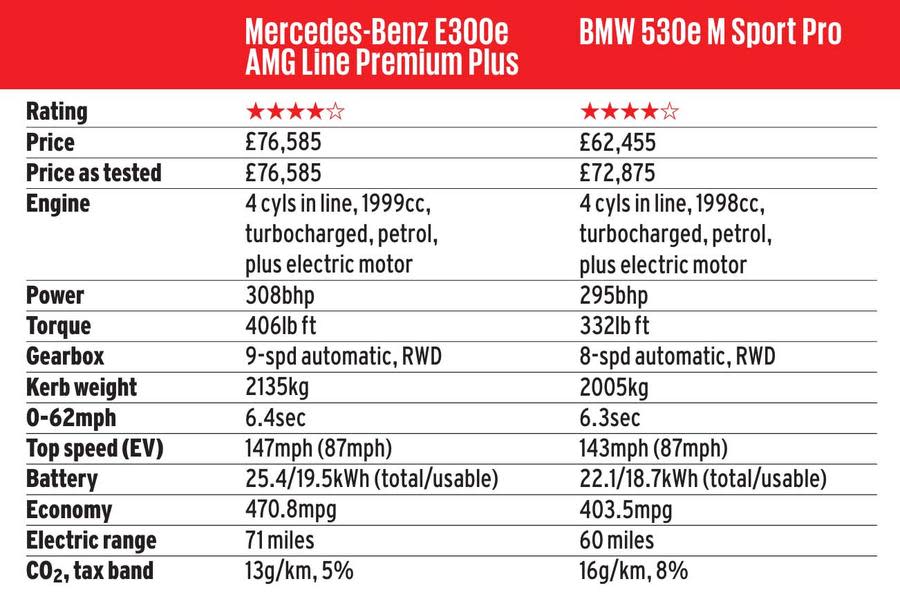
]]>

 Yahoo Autos
Yahoo Autos 